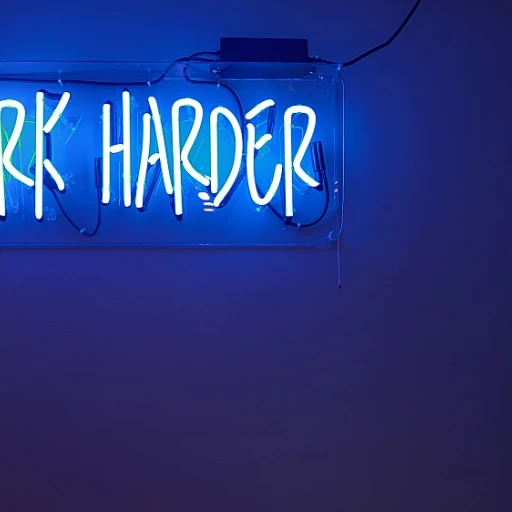
Understanding HR Compliance
Decoding the Essentials of HR Compliance
Navigating the intricate landscape of HR compliance forms an essential part of any successful business strategy. While ensuring adherence to a complex web of federal and state laws, companies must develop and implement comprehensive policies to protect both their employees and themselves. HR compliance encompasses a multitude of elements, including wage and hour regulations, employee safety, employee benefits, and anti-discrimination laws. Each policy crafted under this umbrella is designed to foster a fair and safe working environment for staff, highlighting the importance of understanding every detail. To ensure the company remains compliant with employment laws and guidelines, constructing a compliance checklist is imperative. This tool helps businesses align with legal requirements, thus avoiding costly penalties or litigation. Incorporating the best practices for compliance can streamline processes and safeguard the company's integrity. However, understanding compliance isn't just about following established laws. It involves staying updated with evolving regulations, such as those related to labor laws, occupational safety, and employee health requirements. In this regard, Illinois work break regulations provide an insightful example of state-specific employment policies that organizations need to integrate into their compliance framework. More on Illinois work break regulations. Furthermore, companies must develop robust compliance strategies that include effective training programs for employees. These initiatives ensure staff are abreast of the latest regulations and company policies, ultimately fostering a culture of compliance within the organization. As the importance of understanding HR compliance becomes clear, businesses are inevitably drawn to streamline their processes, minimizing risk while enhancing employee rights. This necessity underscores the vital role of an HR compliance checklist in guiding organizations through the ever-changing legal landscape.Key Components of an HR Compliance Checklist
Essential Elements for Compliance
Creating an effective HR compliance checklist is crucial for any company aiming to adhere to employment laws and regulations. This checklist serves as a roadmap to ensure compliance with federal, state, and local laws, safeguarding both the business and its employees. Here are some key components to consider:
- Employee Handbook: A comprehensive employee handbook is vital. It should outline company policies, procedures, and expectations, ensuring employees are aware of their rights and responsibilities.
- Policies and Procedures: Clearly defined policies and procedures help in maintaining consistency and fairness in the workplace. These should cover areas like wage and hour laws, safety and health regulations, and employee benefits.
- Training Programs: Regular training sessions on compliance requirements, occupational safety, and best practices are essential. This helps employees understand the importance of compliance and how to implement it in their daily work.
- Legal Requirements: Stay updated with the latest employment laws and regulations. This includes federal and state labor laws, ensuring that your company is always in line with legal standards.
- Benefits Administration: Proper management of employee benefits is crucial. This includes health insurance, retirement plans, and other perks that comply with legal requirements.
Ensuring Compliance Through Best Practices
To effectively manage HR compliance, companies should adopt best practices that align with their business goals. Regular audits and reviews of company policies can help identify areas for improvement. Additionally, fostering a culture of transparency and open communication can enhance compliance efforts.
For more insights on how businesses can influence policy through effective human resources communication, you can explore this resource.
Communication Strategies for HR Compliance
Implementing Effective HR Communication Tactics
In the realm of HR compliance, the significance of clear and open channels of communication cannot be overstated. Utilizing effective communication strategies is paramount to ensure that all employees are well-informed about the company's policies, compliance requirements, and changes in employment laws. It also helps in fostering a compliant work culture. To effectively communicate compliance matters with employees, HR teams must ensure that information is accessible, timely, and comprehensible. Here's how you can leverage communication strategies to maintain compliance:- Regular Training Sessions: Consistent training is essential to ensure employees are up-to-date with the latest changes in employment laws and company policies. These training programs should cover topics such as safety health standards, wage hour regulations, and occupational safety measures to enhance understanding.
- Comprehensive Employee Handbook: This is a vital tool for communicating policies procedures and employment laws. It should be regularly updated to reflect any changes in federal state regulations or policies. An employee handbook acts as a reliable source that employees can refer to, ensuring they’re aware of their rights and responsibilities.
- Open Dialogue Encourage: Fostering an environment where employees feel comfortable raising concerns or questions about compliance and regulations is crucial. Transparent communication channels can prevent compliance issues from escalating by addressing them early.
- Utilize Technology: Employing digital platforms for disseminating compliance information can significantly enhance reach and engagement. Tools like intranets, company portals, and email newsletters are effective for sharing updates and best practices.
Challenges in Maintaining HR Compliance
Overcoming Barriers to HR Compliance
Maintaining HR compliance can be a daunting task, with businesses facing various challenges that require strategic approaches. Understanding the intricacies of employment laws and administrative requirements is crucial, but several hurdles often complicate this process. One primary challenge is the constant evolution of laws and regulations at both federal and state levels. Employment law changes can be rapid, making it crucial for companies to stay updated. This requires dedicated resources and expertise to interpret how new laws impact existing company policies and procedures. Another significant challenge is effectively communicating compliance requirements to employees. Ensuring that employees are well-informed about company policies and employment laws is vital. A well-structured employee handbook can serve as a guiding document, but continuous employee training on compliance matters is important to address compliance strategy effectively. This includes workshops on safety and health, labor laws, and benefits administration. Moreover, managing the diverse needs of a workforce, ranging from wage hour laws to occupational safety regulations, can be a staggering task. Balancing these while ensuring employee benefits and safety health standards adds another layer of complexity. Companies need to implement a compliance checklist to methodically track their progress and ensure compliance at all levels. Lastly, maintaining safety health standards and fostering a culture of compliance involves encouraging best practices across the organization. Businesses should consider how company policies align with legal requirements and how policies procedures can be improved to support compliance efforts. Implementing a robust compliance strategy, supported by technology, can streamline these processes and mitigate potential risks.The Role of Technology in HR Compliance
Innovative Tools in HR Compliance
Technology has become an essential ally in maintaining and managing HR compliance, helping businesses navigate complex regulations and ensure that all employees are treated fairly and consistently. Implementing technology solutions can streamline your compliance checklist and transform the way HR departments handle employment laws and policies. Adopting HR technology involves utilizing various tools such as software for tracking regulatory changes, managing employee records, and facilitating training. These tools ensure compliance by automating key aspects of HR practices, reducing the chance for human error.- Compliance Management Software: Such platforms help HR teams keep abreast of federal, state, and local laws, as well as occupational safety standards, enabling proactive adjustments to company practices.
- Employee Record Systems: Digital systems for storing employee details can seamlessly integrate wage, hour, and benefits administration, supporting adherence to employment laws.
- Training Programs: Online training platforms are valuable for reinforcing safety health measures, legal requirements, and updates in labor laws to the workforce consistently.












